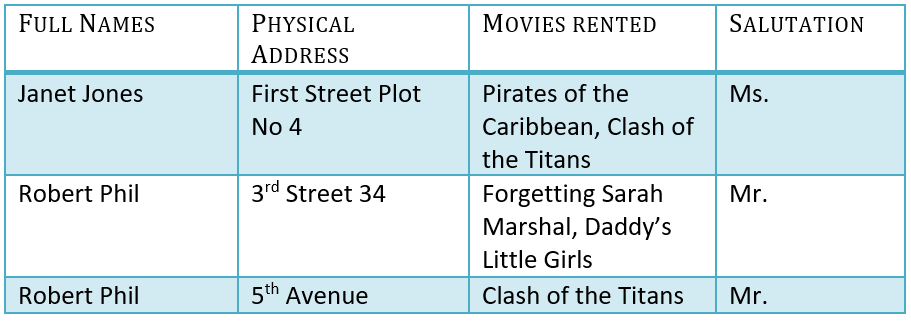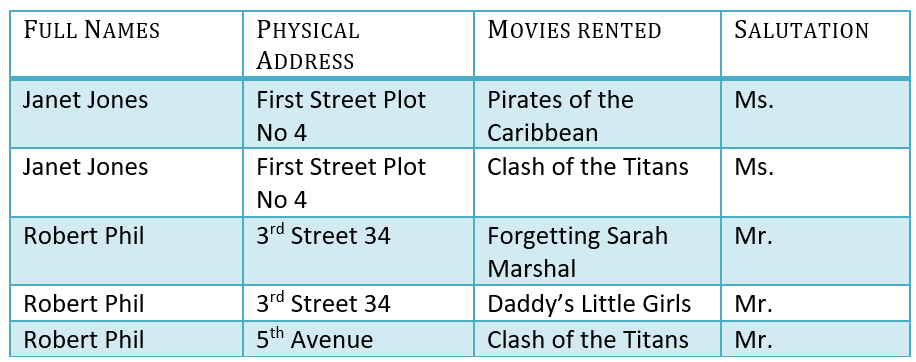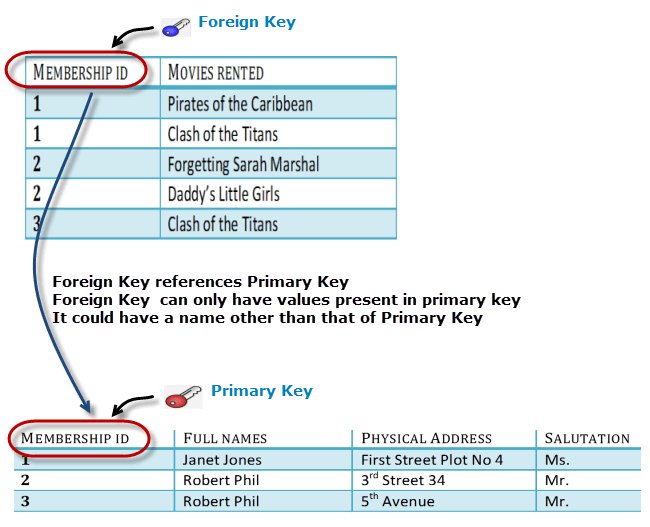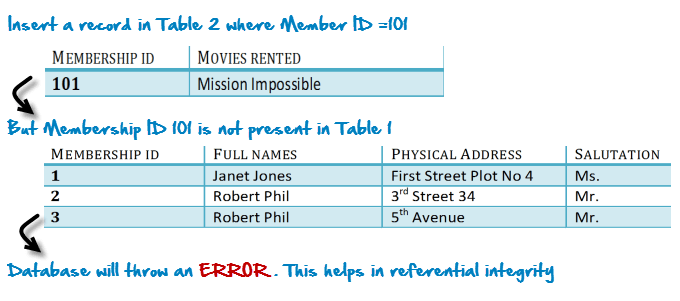Normalization
- The Tech Platform

- Jan 7, 2021
- 5 min read
Normalization is a database design technique that reduces data redundancy and eliminates undesirable characteristics like Insertion, Update and Deletion Anomalies. Normalization rules divides larger tables into smaller tables and links them using relationships. The purpose of Normalization in SQL is to eliminate redundant (repetitive) data and ensure data is stored logically.
The inventor of the relational model Edgar Codd proposed the theory of normalization of data with the introduction of the First Normal Form, and he continued to extend theory with Second and Third Normal Form. Later he joined Raymond F. Boyce to develop the theory of Boyce-Codd Normal Form.
Database Normal Forms Here is a list of Normal Forms
1NF (First Normal Form)
2NF (Second Normal Form)
3NF (Third Normal Form)
BCNF (Boyce-Codd Normal Form)
4NF (Fourth Normal Form)
5NF (Fifth Normal Form)
6NF (Sixth Normal Form)
The Theory of Data Normalization in SQL server is still being developed further. For example, there are discussions even on 6th Normal Form.
Database Normalization Example can be easily understood with the help of a case study. Assume, a video library maintains a database of movies rented out. Without any normalization in database, all information is stored in one table as shown below. Let's understand Normalization in database with tables example:
Here you see Movies Rented column has multiple values. Now let's move into 1st Normal Forms:
1NF (First Normal Form) Rules
Each table cell should contain a single value.
Each record needs to be unique.
The above table in 1NF-
1NF Example
Before we proceed let's understand a few things --
What is a KEY?
A KEY is a value used to identify a record in a table uniquely. A KEY could be a single column or combination of multiple columns
Note: Columns in a table that are NOT used to identify a record uniquely are called non-key columns.
What is a Primary Key?
A primary is a single column value used to identify a database record uniquely.
It has following attributes
A primary key cannot be NULL
A primary key value must be unique
The primary key values should rarely be changed
The primary key must be given a value when a new record is inserted.
What is Composite Key?
A composite key is a primary key composed of multiple columns used to identify a record uniquely
In our database, we have two people with the same name Robert Phil, but they live in different places.
Hence, we require both Full Name and Address to identify a record uniquely. That is a composite key.
Let's move into second normal form 2NF
2NF (Second Normal Form) Rules
Rule 1- Be in 1NF
Rule 2- Single Column Primary Key
It is clear that we can't move forward to make our simple database in 2nd Normalization form unless we partition the table above.
Table 1
Table 2
We have divided our 1NF table into two tables viz. Table 1 and Table2. Table 1 contains member information. Table 2 contains information on movies rented.
We have introduced a new column called Membership_id which is the primary key for table 1. Records can be uniquely identified in Table 1 using membership id
Database - Foreign Key
In Table 2, Membership_ID is the Foreign Key
Foreign Key references the primary key of another Table! It helps connect your Tables
A foreign key can have a different name from its primary key
It ensures rows in one table have corresponding rows in another
Unlike the Primary key, they do not have to be unique. Most often they aren't
Foreign keys can be null even though primary keys can not
Why do you need a foreign key?
Suppose, a novice inserts a record in Table B such as
You will only be able to insert values into your foreign key that exist in the unique key in the parent table. This helps in referential integrity.
The above problem can be overcome by declaring membership id from Table2 as foreign key of membership id from Table1
Now, if somebody tries to insert a value in the membership id field that does not exist in the parent table, an error will be shown!
What are transitive functional dependencies?
A transitive functional dependency is when changing a non-key column, might cause any of the other non-key columns to change
Consider the table 1. Changing the non-key column Full Name may change Salutation.
Let's move into 3NF
3NF (Third Normal Form) Rules
Rule 1- Be in 2NF
Rule 2- Has no transitive functional dependencies
To move our 2NF table into 3NF, we again need to again divide our table.
3NF Example
Below is a 3NF example in SQL database:
Table 1
Table 2
Table 3
We have again divided our tables and created a new table which stores Salutations. There are no transitive functional dependencies, and hence our table is in 3NF In Table 3 Salutation ID is primary key, and in Table 1 Salutation ID is foreign to primary key in Table 3 Now our little example is at a level that cannot further be decomposed to attain higher normal forms of normalization. In fact, it is already in higher normalization forms. Separate efforts for moving into next levels of normalizing data are normally needed in complex databases. However, we will be discussing next levels of normalizations in brief in the following.
BCNF (Boyce-Codd Normal Form)
It is an advance version of 3NF that’s why it is also referred as 3.5NF. BCNF is stricter than 3NF. A table complies with BCNF if it is in 3NF and for every functional dependency X->Y, X should be the super key of the table.
Example: Suppose there is a company wherein employees work in more than one department. They store the data like this:
Functional dependencies in the table above: emp_id -> emp_nationality emp_dept -> {dept_type, dept_no_of_emp}
Candidate key: {emp_id, emp_dept}
The table is not in BCNF as neither emp_id nor emp_dept alone are keys.
To make the table comply with BCNF we can break the table in three tables like this: emp_nationality table:
emp_dept table:
emp_dept_mapping table:
Functional dependencies: emp_id -> emp_nationality emp_dept -> {dept_type, dept_no_of_emp}
Candidate keys: For first table: emp_id For second table: emp_dept For third table: {emp_id, emp_dept}
This is now in BCNF as in both the functional dependencies left side part is a key.
4NF (Fourth Normal Form) Rules If no database table instance contains two or more, independent and multivalued data describing the relevant entity, then it is in 4th Normal Form.
5NF (Fifth Normal Form) Rules A table is in 5th Normal Form only if it is in 4NF and it cannot be decomposed into any number of smaller tables without loss of data.
6NF (Sixth Normal Form) Proposed 6th Normal Form is not standardized, yet however, it is being discussed by database experts for some time. Hopefully, we would have a clear & standardized definition for 6th Normal Form in the near future...
That's all to SQL Normalization!!!
Summary
Database designing is critical to the successful implementation of a database management system that meets the data requirements of an enterprise system.
Normalization Process in DBMS helps produce database systems that are cost-effective and have better security models.
Functional dependencies are a very important component of the normalize data process
Most database systems are normalized database up to the third normal forms.
A primary key uniquely identifies are record in a Table and cannot be null
A foreign key helps connect table and references a primary key
Read more -
Source: Guru99
The Tech Platform




























Explore, crash, prank, and laugh—because in Dude Theft Auto, chaos is the ultimate goal.